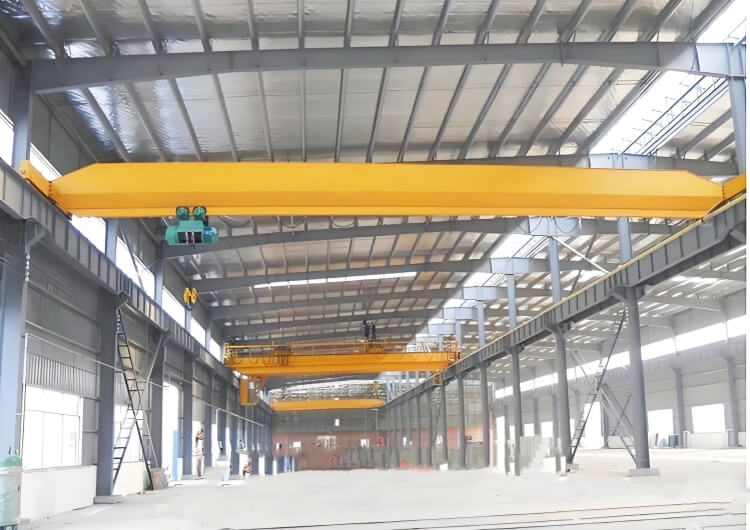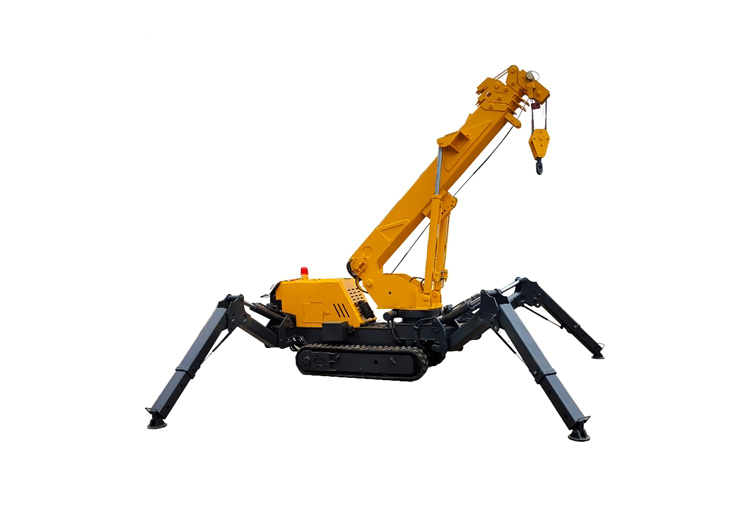RMG Crane VS RTG Crane: New Trends in Port Lifting Equipment
The global container handling market faces unprecedented pressure: by 2027, port operators must increase throughput by 40% while reducing carbon emissions by 50% to meet IMO 2030 targets. This dual challenge has ignited a technological revolution in RMG Cranes (Rail-Mounted Gantry) and RTG Cranes (Rubber-Tired Gantry), transforming them from mere lifting tools into intelligent, eco-efficient logistics command centers. Below, we analyze how these critical port assets are evolving to meet tomorrow’s demands.
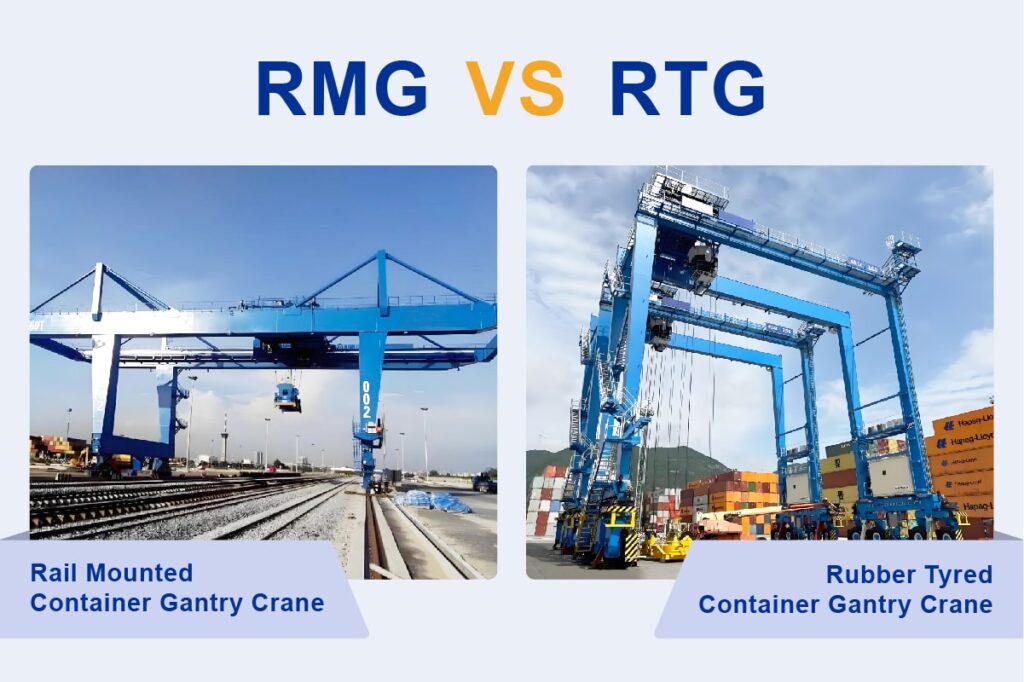
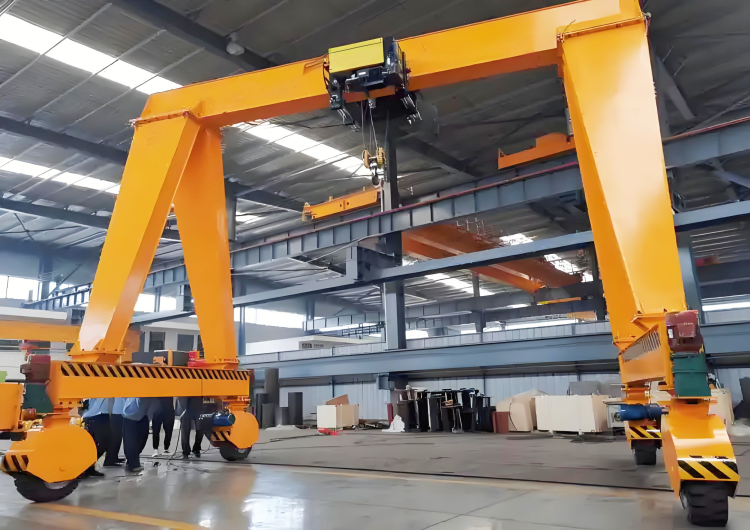
🔥 1. Defining the Contenders: Core Differences Between RMG and RTG Cranes
Structural DNA and Operational Mechanics
RMG Cranes (Rail-Mounted Gantry Cranes) operate on fixed tracks, typically electrified via conductor rails or cable reels. Their rigid rail alignment enables millimeter-precision movement (±10mm), making them ideal for high-density stacking (up to 8 containers high) in terminals prioritizing vertical space utilization. The rail system eliminates tire friction, cutting energy consumption by 60% compared to diesel alternatives
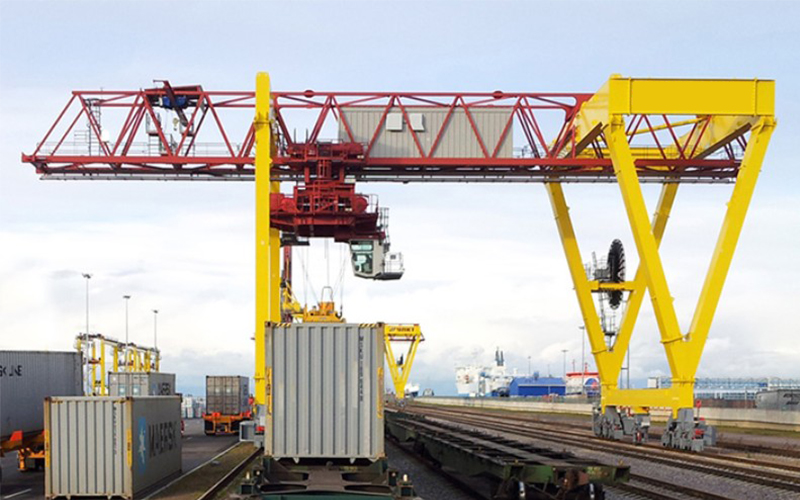
RTG Cranes (Rubber-Tired Gantry Cranes) leverage diesel-electric or lithium battery systems for untethered mobility. Their 90-degree tire rotation allows transversal movement across multiple yard blocks without external infrastructure—enabling operators to redeploy equipment in under 30 minutes. This makes RTGs the go-to solution for multi-zone operations and congested terminals with dynamic container flows
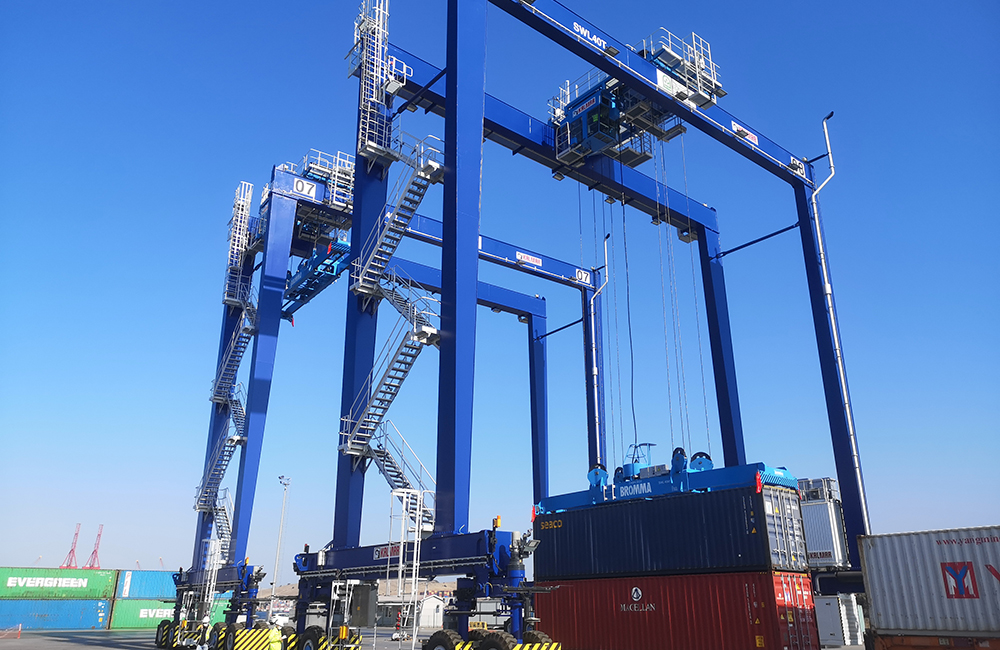
Performance Benchmarking: Key Metrics
| Parameter | RMG Crane | RTG Crane |
|---|---|---|
| Mobility Range | Fixed rail path | Yard-wide (unconstrained) |
| Stacking Density | 1,800 TEU/ha | 1,250 TEU/ha |
| Energy Cost/TEU | $0.15 (electric) | $0.45–$0.80 (diesel/battery) |
| Positioning Error | ±5–10mm | ±30–50mm |
| Max Lifting Height | 25m+ | 18m |
⚙️ 2. Automation Revolution: RMG and RTG Smart Features Reshaping Port Ops
RMG Cranes: The Autonomous Backbone
RMGs dominate automated terminals (87% market share) due to predictable movement along fixed coordinates. The latest systems integrate:
LIDAR + AI Vision Container Identification: Reduces misalignment during grabs by 99.8% (e.g., Rotterdam Maasvlakte II)6
Centralized Traffic Control (CTC): One operator supervises 10+ cranes via digital twin interfaces
Dynamic Re-routing Algorithms: Adjust crane paths in real-time during rail congestion
RTG Cranes: Flexible Automation Pioneers
RTGs bridge the automation gap for smaller ports through retrofit-ready smart packages:
SHENLI RTG 2.0: UWB anchors + inertial sensors enable “drone-like” waypoint navigation, cutting calibration downtime by 70%
Active Load Control (ALC): Anti-sway software compensates for tire deformation during windy operations
Remote Operation Pods: DP World Yarimca (Turkey) slashed operator fatigue incidents by 45% after transitioning to remote-controlled RTGs
🌱 3. Green Power Technologies: Decarbonizing RMG and RTG Operations
RMG Cranes: Grid-Powered Efficiency
Regenerative Power Recovery: Convert braking energy into reusable electricity (up to 18% energy recovery)
Solar-Ready Tracks: Qingdao Port’s RMGs draw 40% of power from canopy-mounted PV panels
Hydrogen Hybrid Boosters: Pilot in Hamburg uses H₂ fuel cells for peak load support during storms
RTG Cranes: Diesel-to-Electric Conversion Wave
Lithium Titanate (LTO) Batteries: 15-minute fast charging sustains 8-hour shifts (tested at Los Angeles HyZRTG Project)
Cable Reel Hybrid Systems: Auto-connect/disconnect at charging poles—eliminates 90% of diesel runtime
Hydrogen Fuel Cells: SHENLI’ Highland Spring RTG operates silently with only H₂O emissions—key for urban ports
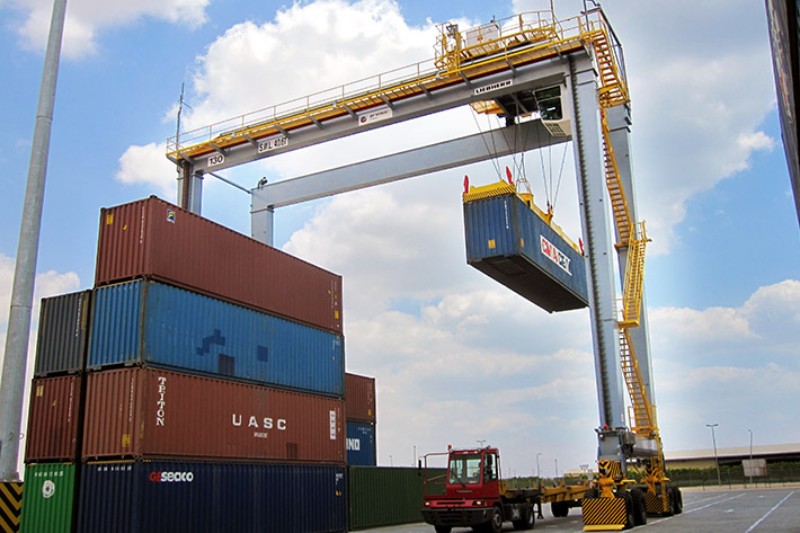
📊 4. Success Stories: Ports Winning with Next-Gen RMG/RTG Solutions
Automated RMG Triumph: PSA Singapore (2024)
PSA replaced 32 manual RTGs with 27 automated RMGs + 5 autonomous e-ARTGs, achieving:
Throughput Increase: 32% higher moves/hour
Labor Optimization: 70% reduction in crane operators
Precision Gains: 99.98% container drop accuracy via AI vision
The system’s machine learning-based traffic optimizer reduced crane idle time by 41%
RTG Electrification Model: Port of Long Beach (2023)
Facing California’s strict emissions laws, Long Beach deployed 48 battery-electric RTGs featuring:
Swappable Battery Packs: Tesla-designed robots replace 1-ton packs in 8 minutes
Kinetic Energy Recovery: Recaptures 22% of energy during lowering/braking
Results: $2.1M/year diesel savings + 12,000-ton CO₂ reduction—payback in 3.2 years
💰 5. Total Cost of Ownership: 10-Year Financial Simulation
| Cost Factor | Automated RMG | Diesel RTG | Electric RTG |
|---|---|---|---|
| Initial Purchase | $2.5M | $1.2M | $1.8M |
| Infrastructure | $1.1M (rails) | $0 | $350k (chargers) |
| Energy (10 yrs) | $180k | $1.44M | $540k |
| Maintenance | $310k | $790k | $410k |
| Labor (10 yrs) | $480k (remote) | $2.4M (on-cab) | $1.2M (hybrid) |
| Total (10 yrs) | $4.57M | $5.83M | $4.3M |
| Analysis assumes 500,000 TEU/year operations. Source: Drewry Maritime Financial Review 2025 |
Key Insight: Electric RTGs now rival RMGs in mid-sized terminals—offering 26% savings over diesel RTGs while preserving mobility.
🔮 6. Future Outlook: AI, Swarm Robotics, and Beyond
Predictive Intelligence Integration
RMG “Digital Twins”: SL’s Steel Rail Health Cloud uses 200+ sensors per crane to forecast track deformations 48 hours pre-failure
RTG Health Monitoring: AI collab predicts engine/battery degradation with 92% accuracy
Swarm Coordination Breakthroughs
RMG “Trains”: 3–5 cranes operate in synchronized platoons—boosting same-aisle efficiency by 30% (testing at Hamburg HHLA)
RTG + AGV Fleets: Autonomous guided vehicles deliver containers directly under RTGs—eliminating truck queues
The Hybrid Yard Paradigm
Forward-looking ports now blend both technologies:
Core Stacking Zone: High-density automated RMGs (60m spans, 10-high stacking)
Flexible Transfer Zone: Battery-electric RTGs handle truck/rail transfers and overflow storage
Example: Rotterdam’s RWG Terminal achieves 50 TEU/ha density gain with hybrid setup
🏆 Conclusion: Strategic Selection Framework
Choose RMG Cranes If:
Your terminal has ≥200m linear quay walls and stable container flows
Land scarcity demands 8+ high stacking
Grid power access enables low-carbon operations
Choose RTG Cranes If:
Multi-zone mobility is critical (e.g., breakbulk + container operations)
Phased automation/electrification fits CAPEX constraints
Terminal expansion plans require relocatable assets
The Next Frontier: Hydrogen-hybrid RMGs and autonomous battery-swapping RTGs will dominate 2027–2030 procurement cycles. Ports delaying tech adoption risk 40% higher compliance costs post-IMO 2030.
“The future isn’t RMG vs. RTG—it’s smartly integrated fleets where fixed and mobile cranes collaborate like a symphony.”
All News
Recent Posts
2025/1/25
2025/2/7
2024/8/1
Contact Us Now
Have questions about our cranes or need help?
Reach out to our friendly team for expert support and guidance.
We are here to help you power your journey towards a greener future !
Address: Crane Industry Park, Xinxiang City Henan Provice

